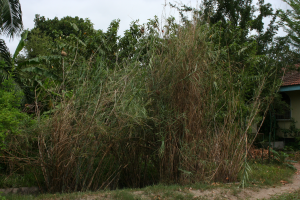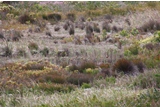PHOWN summaries and recordsVirtual Museum View records in Virtual Museum formatCoverage map for all species Species totals, Nest stats per species and Observer totals Species summary , or General query Observer records, or View VM record Photo of the week, or PHOWN repeats, or PHOWN priorities |
PHOWN record summary
|
Enter new vm record to see a different record and hit 'Go'.
|
Species allocated by Coordinator: Record details entered by participant: (see all records here for this participant) Google map for this record (zoom in and switch to satellite view)
Best: Zanzibar Red Bishop - female at nest
Photos uploaded by observer

Large photos
800, Eastern Golden Weaver Ploceus subaureus (see species summary here)Record status ACCEPTED Vm 684 [on-line data upload (2011-03-23): 4971] Species Zanzibar Red Bishop and Afr. Golden Weaver Observer(s) Outwater A H Country, town, locus Tanzania, , Dar es Salaam,
0639CCLocality A plot of approx. 30 x 30 meters, with three small-medium sized houses, a small constructed wetland for sewage treatment, and a little nature preserve. Latitude, longitude -6.76101137439005, 39.2478780448437 [0 m accuracy] Date 2011/3/13 Notes see notes in vm_683 Nest count 3 Nest site other
To see this map with all other PHOWN records, click here. Note that the map on this page will load very slowly and probably will only work if you use Chrome as a browser.
History of repeat colony counts
Note: repeats from the same day are not shown.vm Species code Date Nests Notes 683 3754 13/3/2011 3 The wetland was constructed in June 2005 to take care of the sewage for three houses. It is 4 by 1.5 meters, a horizontal subsurface flow design. The substrate is gravel and the plants are Phragmeites reeds. The photo shows the constructed wetland at the end of the dry season, February 2011. Ploceidae nesting activity in the garden centers around the constructed wetland.
For several years the reeds were too small to support nests. The first birds to nest in the wetland were Black-headed Weavers who wove their long stemmed balls hanging off the Phragmeites. I have photographs dated December 2009 of a fully constructed nest. However they left.
Zanzibar Red Bishop birds have been building nests in the wetland steadily since the end of 2009. Currently in the Phragmeites reeds of the constructed wetland are 6 nests: 3 each of Zanzibar Red Bishop birds (1 new and 2 old), and of African Golden Weavers (1 new and 2 old).
Outside the constructed wetlands Spectacled Weavers have been building nests continuously in various trees with droopy branches since at least 2004. Currently, two nests can be found hanging off the coconut palm fronds (1 new and 1 old).
I do not know exactly how productive all this nest building is. At least one fledgling has been raised successfully, by the Zanzibar Red Bishop birds and the Spectacled Weavers.
1852 3754 10/1/2012 5 In the last few months Spectacled Weavers have built six nests elsewhere the garden; at least one has young inside. The Black-headed Weaver started to build a nest in a nearby mpingo tree but quit. The only birds now nesting in the constructed wetland are Zanzibar Red Bishops (Euplectes nigroventris).
Bishop Birds had not been seen for some months in the garden and then suddenly a male was back at the constructed wetland building nests in late October. He built several. On 19 November a female was inspecting one of the nests that was rejected. She was subsequently proved correct when the reeds it was tied to were pushed down during the massive rains in late December; the nest ended upside down.
A nest was finally accepted a few weeks later. This nest survived the heavy rains. In 22 December two eggs were in the nest. On 25 December the female at the nest was facing in for a long time. She was probably watching the chicks hatching, as soon afterwards I found pieces of light blue eggshell on the near by pathway.
January 7th the last fledgling left the nest.
For two successive seasons the Zanzibar Red Bishop birds have successfully bred in the constructed wetlands. I can now say with a bit of confidence that this small constructed wetland is adequate habitat for one pair of Bishop Birds to annually raise young to adulthood.
They may be able to raise two broods per year . The first group fledged in March 2011 and the second in January 2012.
While the young ones on the second group were growing, a male was already building another nest about two feet away on some strong young reeds rising tall with new growth.
the fledglings matured safely.
A very few days later this new nest had a female sitting in it. If she were the mother of the last fledglings, or a new female I cannot tell. But she is sitting snugly in the nest, facing out the entrance. She is sitting in there more hours every day; surely there are eggs underneath her. 
Vm 683
Vm 1852










